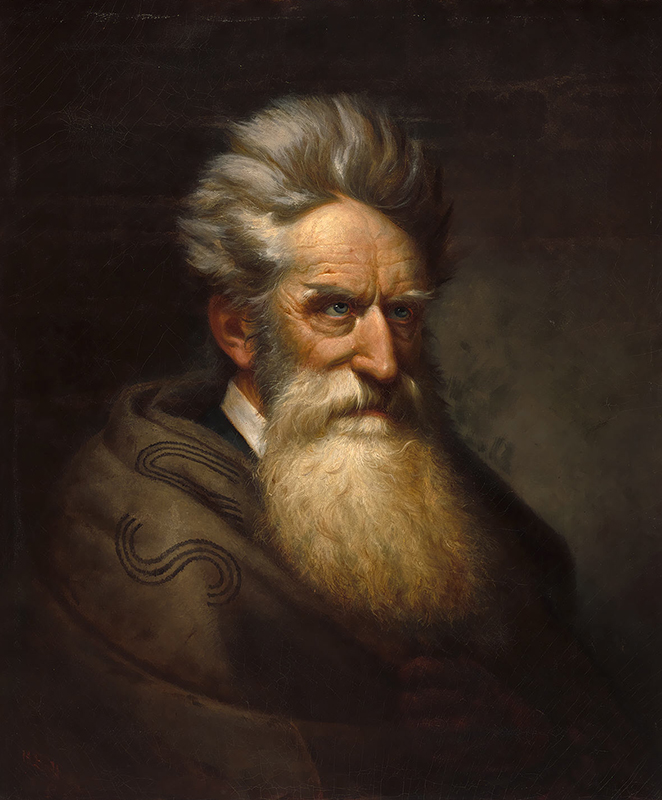John Brown (1800-1859)

John Brown 1800-1859 | Born Torrington, Connecticut | Ole Peter Hansen Balling (1823-1906) | Oil on canvas, 1872 | NPG.74.2
Abolitionist John Brown believed he had been called by God to embark on a personal crusade to end slavery. Brown and five of his sons were actively engaged in the bloody guerrilla war being waged in Kansas in 1855-56, between proslavery and antislavery factions. But in 1857, Brown began making plans for the 1859 raid on the federal arsenal at Harpers Ferry, an event that would make him both infamous and immortal. The scheme to commandeer firearms with which to arm a slave rebellion failed, and Brown was captured, tried, and hanged. His insurrection found favor among many northern abolitionists. In response, southerners viewed Brown as a sign that they must either break their allegiance to the Union or be destroyed by an increasingly fanatical North.
Ole Peter Hansen Balling was a Norwegian-born artist who briefly served as a union soldier at the start of the Civil War. This painting was completed in 1872 based on an 1859 photograph of John Brown by Martin M. Lawrence. Brown is shown during the time of his imprisonment, wrapped in a US Army issued blanket, before his execution on December 2, 1859.
- List three adjectives to describe Brown. Why did you choose these three, and how are they reflected in the portrait?
- Look closely; describe the setting of the portrait. What is the artist trying to say by placing Brown in his jail cell?
- Compare and contrast this portrait to Augustus Washington’s portrait of John Brown, from c.1846-1847. What sorts of conclusions can we make about Brown based on both images?